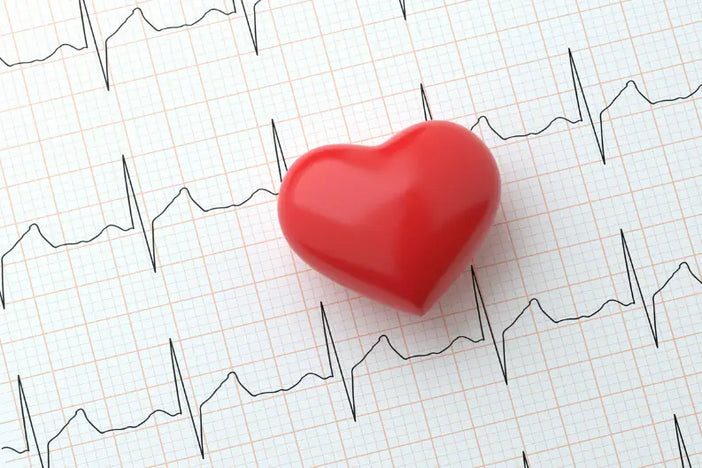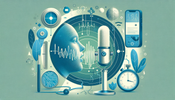Why is Hypertension a Risk Factor for Diabetes Mellitus

Hypertension, or high blood pressure, is a common complication among individuals with type 2 diabetes. It's unclear why there's such a strong link between the two illnesses. The following risk factors are thought to play a role in both conditions:
Obesity.
A high-fat, high-sodium diet.
Inflammation that is ongoing.
Inactivity of an individual.
Because it generally has no evident symptoms and many individuals are unaware they have it, high blood pressure is known as the "silent killer." According to a 2013 poll by the American Diabetes Association (ADA), fewer than half of patients at risk for heart disease or type 2 diabetes said they talked to their doctors about indicators like blood pressure.
What is hypertension and what are the signs of it?
Hypertension, or high blood pressure, is a common cardiovascular disease in which the pressure in your arteries becomes higher than it would otherwise be.
The force of blood pressing against the walls of the arteries as the heart pumps blood throughout the body is known as blood pressure. According to the American Heart Association, uncontrolled high blood pressure can lead to health concerns such as heart disease, stroke, renal failure, eyesight loss, and more (AHA).
The majority of people who have high blood pressure have no indications or symptoms. As a result, the disease has been termed a "silent killer."
According to the AHA, if blood pressure rises to hazardous levels, patients with hypertension may have headaches, shortness of breath, or more nosebleeds than usual.
What is considered high blood pressure? Is 120/90 mm Hg considered high?
If you have high blood pressure, it implies your blood is rushing too forcefully through your heart and blood vessels. Consistently high blood pressure wears down the heart muscle and causes it to expand over time. In 2008, 67 percent of American individuals aged 20 and above who self-reported diabetes had blood pressure readings of 140/90 millimeters of mercury or higher (mm Hg).
A blood pressure value of less than 120/80 mm Hg is considered normal in the general population and in diabetics.
What exactly does this imply? The systolic pressure (120) is the first number. As blood pumps through your heart, it exerts the strongest pressure. The diastolic pressure (80) is the second number.
Diabetes and high blood pressure.
What's the link?
According to the American Diabetes Association, the combination of hypertension and type 2 diabetes is highly dangerous, increasing your chances of having a heart attack or stroke. Other diabetes-related disorders, such as kidney disease and retinopathy, are more likely to occur if you have type 2 diabetes and high blood pressure. Diabetic retinopathy has the potential to cause blindness.
There's also evidence that persistent hypertension might hasten the onset of cognitive impairments connected with aging, such as Alzheimer's disease and dementia. According to the American Heart Association, blood arteries in the brain are especially vulnerable to harm from hypertension. As a result, these are significant risk factors for stroke and dementia.
Uncontrolled diabetes isn't the sole condition that raises the risk of hypertension. Remember that if you have more than one of the following risk factors, your chances of having a heart attack or stroke grow exponentially:
Heart illness in the family.
Sedentary lifestyle.
High cholesterol.
Age obesity.
Current smoking habit.
Too much alcohol.
A high-fat, high-sodium diet.
Renal disease, diabetes, and sleep apnea are examples of chronic conditions that can lead to cardiovascular disease like chronic high blood pressure.
If you have diabetes, you should get your blood pressure checked at least four times a year by your doctor. The American Diabetes Association suggests that people with diabetes and high blood pressure self-monitor at home, record their results, and communicate them with their doctor.
How can you reduce your chances of developing high blood pressure?
You can manage your blood pressure in a healthy range by leading a healthy lifestyle. Keeping your blood pressure in check might help you avoid the risk of developing cardiovascular complications and stroke. Make the following healthy living behaviors a part of your daily routine:
Consume a Balanced Diet
To help you avoid hypertension and its problems, choose healthy meal and snack alternatives. If you have cardiovascular disease, eating a diet rich in whole grains, fruits, vegetables, and low-fat dairy products while avoiding saturated fat and cholesterol can drop your blood pressure. Dietary Approaches to Stop Hypertension (DASH) is the name of diet.
Maintain a Healthy Body Weight
Obesity or being overweight raises your chances of hypertension. Doctors examine your body mass index to see if you're in a healthy weight range (BMI). Waist and hip measurements are occasionally used by doctors to determine body fat.
Actively participate in sports
Physical activity can aid in the maintenance of a healthy weight and the reduction of hypertension. Every week, adults should obtain at least 2 hours and 30 minutes of moderate-intensity activity such as brisk walking or bicycling. This comes to around 30 minutes each day, five days a week.
Smoking is not allowed
Smoking boosts hypertension and increases your risk of heart attack and stroke. Don't start smoking if you don't already. Stopping smoking lowers your risk of developing heart disease and other cardiovascular risk factors. Your doctor may be able to offer methods to assist you in quitting.
RELATED: Smoking and Diabetes: The Top Risks and More
Limit Your Alcohol Consumption
Drinking too much alcohol might cause hypertension. Adults of the legal drinking age can choose not to drink or drink in moderation by restricting intake to two drinks or less per day for males and one drink or fewer per day for women on special occasions.
Excessive alcohol use can lead to an increased risk of chronic illnesses and other major complications such as high blood pressure, heart disease, stroke, liver disease, and digestive issues over time. It is very dangerous for people with type 2 diabetes to excessively consume alcohol.
Get Enough Sleep
Getting adequate sleep is critical for your general health, diabetes management as well as the health of your heart and blood vessels. Type 2 diabetes will be more difficult to manage if you sleep less than 7 hours every night on a regular basis.
Insulin resistance can be complicated by the lack of sleep. It increases the risk of you being hungry the next day and makes you feel less full after you eat. Heart disease, high blood pressure, and stroke are all connected to not getting enough sleep on a regular basis.
RELATED: What are the symptoms of type 2 diabetes?
What you can do if you're diagnosed with hypertension?
Your general practitioner will perform a physical exam and ask about your medical history. A physician, nurse, or another medical assistant will place an inflated arm cuff over your arm and measure your blood pressure with a pressure-measuring gauge.
It's important to check your blood pressure in both arms to see whether there's a difference. Hypertension may be controlled and managed by altering your lifestyle. However, lifestyle adjustments aren't always sufficient. If diet and exercise don't work, your doctor may prescribe medication.
The sort of hypertension medication your doctor recommends is determined by your analysis and general health. Finding the best effective prescription or drug combination might be a trial and error process.
Tips on how to take care of yourself after being diagnosed with hypertension or diabetes
You may reduce hypertension and diabetes mellitus by making a variety of lifestyle modifications. Almost all of them are nutritional, however regular exercise is also advised. Most doctors recommend 30 to 40 minutes of brisk walking every day, but any aerobic activity can help your heart.
While some people with type 2 diabetes and high blood pressure can improve their condition by making lifestyle changes, the majority will need medication. Some people may require more than one medicine to control their hypertension, depending on their general health. The majority of hypertension medication treatment fit into one of the following categories:
- Angiotensin-converting enzyme (ACE) inhibitors and angiotensin II receptor blockers are two types of angiotensin-converting enzyme inhibitors (ARBs)
- Beta-blockers
- Calcium channel blockers
- Diuretics
Keep track of how you're feeling because some drugs have adverse effects. Before taking any prescription, nutritional, herbal, or homeopathic supplement, starting any diet, or exercise plan, or adopting any therapy for a health concern, you should always check with your physician or other health care provider.
Your doctor should schedule appropriate follow-up appointments and tailor your food, nutrition, and/or fitness regimen as needed. Contact your health care practitioner right away if you are experiencing any irregular blood glucose fluctuation.
The development of diabetes and hypertensive disorders typically coexist. In terms of genesis and disease processes, diabetes mellitus and hypertension have a lot in common. The common mechanisms are assumed to be increased body mass index, inflammation, oxidative stress, and insulin resistance. In diabetic individuals, hypertension is twice as common as in those who do not have diabetes mellitus. Furthermore, patients with hypertension frequently have insulin resistance and are at a higher risk of developing type 2 diabetes than people with normal blood pressure.



